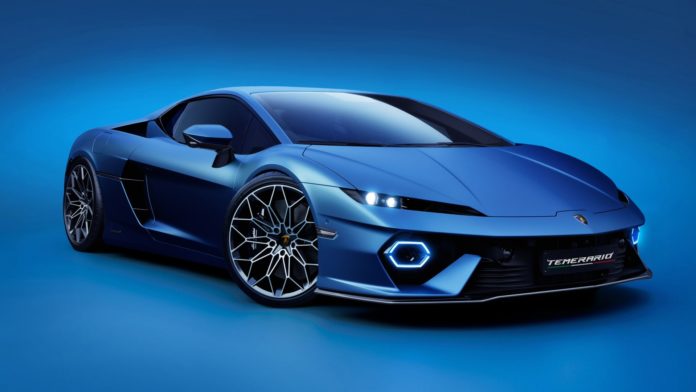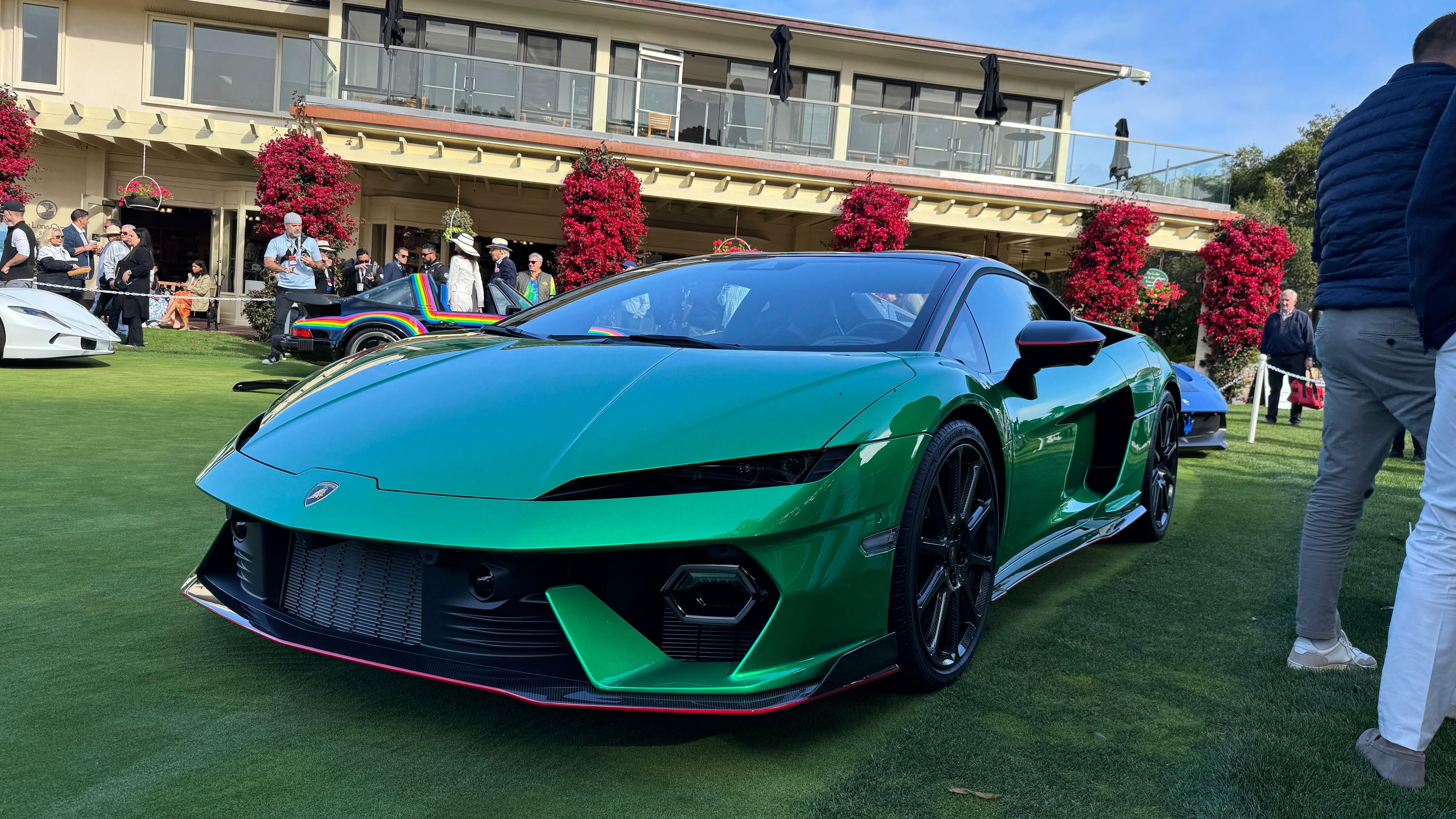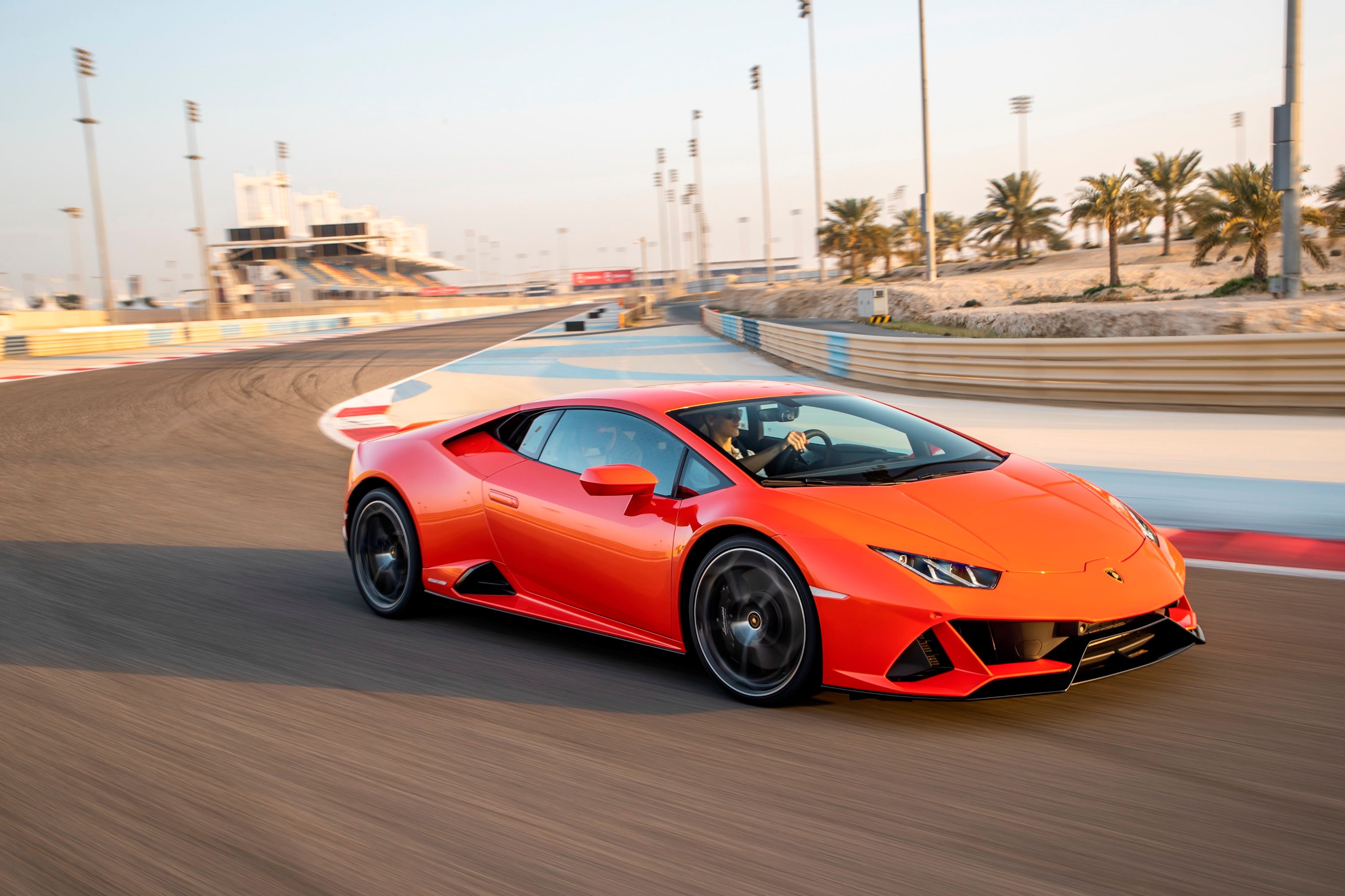The Lamborghini Temerario, the long-awaited successor to the Huracan and the new smallest member of the Lamborghini family, has finally landed. Breaking the tradition of models named after Spanish fighting bulls (the Huracan being one of them), the Temerario’s name is a word that loosely translates as “fearless” or “reckless”. It distinguishes itself from previous entry-level Lambos thanks to one crucial difference: the V10 engine that became one of the brand’s trademarks is gone, making way for a new V8-based hybrid powertrain propelling Lamborghini into the future. This new addition gives the Temerario a substantially increased power output, as well as affirming the brand’s commitment to electrification going forward. Let’s put the Temerario and the most recent incarnation of its predecessor, the 2024 Huracan, next to each other for a head-to-head comparison.
This is an on-paper comparison based on data and information provided by the manufacturer, not a comparison between driven vehicles as the Temerario is brand-new.
Design: Sleek And Sleeker
While the Huracan was initially lambasted for “not looking Lambo enough” when it first made its debut in 2013, it eventually shaped Lamborghini’s design language, becoming an instantly recognizable, iconic model. From the sleek, sharp lines to the menacing, angular look of the headlights, the Huracan’s design projected the idea of speed and modernity, and the different versions of the model available in 2024 each incorporated subtle design changes that matched their character.
The Sterrato, an unlikely off-road hero, added bolder and more rugged elements such as aluminum underbody protection, roof rails, and wheel arch extensions. The Tecnica, meanwhile, comes with a slightly longer body and a carbon fiber hood and engine cover, along with a redesigned front end. The range-topping STO combines the front bumper, hood, and fenders in a single element dubbed the “Cofango”, taking inspiration from the world of motorsport. Its design is primarily focused on optimizing airflow, with air ducts in both the hood and the rear fender; a large adjustable rear wing enhances aerodynamic performance.
The Temerario takes things in a slightly different direction, turning all the iconic Lamborghini design elements up to 11. The headlights are even more narrow and aggressive, the lines even more svelte and dynamic, the aerodynamic optimization even more extreme. The latter is achieved through cutaways behind the rear wheels and an integrated fixed spoiler which give the Temerario a motorsport-inspired edge. The blade-shaped LED headlights create the illusion of greater width and a narrow-eyed, menacing stance. In keeping with Lamborghini tradition, the all-new engine is exposed and showcased, “like in a motorcycle” in the company’s own words.
The level of customization available for the Temerario is very high, with over 400 color options available, including two new exclusive finishes: Blu Marinus (blue) and Verde Mercurius (green). Three design options for the differently-sized (20 inches at the front and 21 at the rear) wheels are available, along with several wheel color options.
Add CarBuzz to your Google News feed.
Powertrain: Out With The Old, In With The New
|
Model |
Huracan |
Temerario |
|---|---|---|
|
Engine |
5.2-liter V10 |
4.0-liter twin-turbo V8 + three electric motors |
|
Drivetrain |
RWD/AWD |
AWD |
|
Transmission |
7-speed automatic |
8-speed automatic |
|
Horsepower |
602-640 hp |
907 hp |
|
Torque |
416-442 lb/ft |
538 lb/ft |
|
0-60 |
3.0-3.4 seconds |
<2.7 seconds |
|
Top Speed |
162 mph (Sterrato) | 192-202 mph (other variants) |
213 mph |
The Huracan’s discontinuation marks the end of Lamborghini’s V10 era, as the brand proceeds full-speed-ahead towards electrification with its “Direzione Cor Tauri” program. However, having defined a large part of the brand’s identity for years, the V10 is sure to become a fondly-remembered part of automotive history. In most versions of the Huracan available in 2024, the 5.2-liter unit produces 631 hp; however, in the off-road-focused Sterrato and the RWD version of the Evo, it only produces 602 hp.
A seven-speed dual-clutch automatic transmission sends power to either all four wheels or the rear wheels, depending on which version of the Huracan you opt for (the Evo comes with a RWD variant, while the Tecnica and STO are only available with a RWD layout). A limited-edition STJ version, of which only 10 units were produced, was released earlier this year as a final send-off to the mighty V10; this version is also RWD-only, and comes with an exclusive performance package not available on other versions. This includes additional aero enhancements, a reworked chassis and racing-derived shocks, which cut the STJ’s lap time around the Nardo test track by one second compared to that of its STO sibling.
The Temerario, meanwhile, brings a brand-new powertrain into the spotlight, setting Lamborghini on the path towards electrification by taking away two cylinders and adding three electric motors. This hybrid setup, with the motors contributing 148 hp each, was first introduced in the Revuelto. While electric and hybrid cars have developed a reputation for being bulky and heavy, Lamborghini has taken care to minimize the hybrid setup’s impact on the Temerario’s weight. Each electric motor only weighs 34 pounds, and the 3.8-kWh battery is also on the small side.
As for the V8 itself, its flat-plane crank design, use of lightweight materials, and placement of auxiliary cooling systems to one side all enable it to produce a very high power output before the electric motors even get involved (789 hp) and reach an ear-shattering redline of 11,000 rpm. Its two turbos are arranged in a “hot-vee” configuration (between the V8’s cylinder banks), keeping the engine’s dimensions as compact as possible. The hybrid system is also laid out in a way that optimizes performance, with one electric motor nestled between the engine and the gearbox while the other two are installed on the front axle. An 8-speed dual-clutch transmission completes the powertrain, sending 908 hp to all four wheels.
Special Equipment: On The Dirt Road Or On The Racetrack?
When it comes to unusual extra features, the Sterrato is the first version of the Huracan that comes to mind; this quirky off-road supercar is truly one of a kind, combining Lamborghini performance with all-terrain prowess thanks to its unique modifications. More prominent sills, extended wheel arches, and custom off-road run-flat tires all set the Sterrato apart from its stablemates, immediately marking it out as a supercar that could handle a rally stage without breaking a sweat. The suspension has also been raised for increased ground clearance, and aluminum underbody protection has been added to handle rough terrain without risking serious damage.
Meanwhile, the Temerario’s optional features focus more on performing on the track rather than off-road (although there is a possibility the Temerario may get its own off-road variant further down the line). An optional Alleggerita (Italian for “lightened”) package reduces the car’s weight by 28 to 55 pounds. This wide range in weight reduction is due to the fact that there are two versions of the Alleggerita package you can choose from: one only focuses on the car’s exterior, while the other also upgrades some of the interior elements, adds carbon fiber wheels, and a titanic exhaust muffler. Lamborghini claims the more advanced package increases aerodynamic efficiency by 67%. And if you want to take things further and have the lightest possible Temerario you can own, an additional Carbon Pack subtracts another four pounds.
Interior and Tech: A Fighter Jet On Wheels
|
Model |
Huracan |
Temerario |
|---|---|---|
|
Leather Upholstery |
O |
O |
|
Heated Front Seats |
O |
S |
|
Ventilated Front Seats |
O |
S |
|
Digital Gauge Cluster |
S |
S |
|
Wireless Smartphone Connectivity |
N/A |
S |
|
* S = Standard, O = Optional, N/A = Not Available |
||
The interior of both the Huracan and the Temerario is inspired by Lamborghini’s “feel like a pilot” design principle, where the cockpit of a fighter jet is used as the inspiration for the look and feel of the cabin. The most striking example of this is the flip-open cover that reveals the start/stop button, a design feature present in both cars.
The Huracan’s interior is rich in carbon fiber, leather, and Alcantara, with a high degree of customization that lets the customer choose where to use these materials and in what color scheme. While power-adjusted seats with lumbar support are the default option, however you can also choose to have simpler fixed-back seats with horizontal adjustment only. The infotainment system is controlled by an 8.4-inch touchscreen sitting right above the start button, while a 12.3-inch screen acts as the digital gauge cluster.
The Temerario similarly employs lots of high-end materials in its interior, including the new ultralight CorsaTex faux-suede fabric, which is made from recycled polyester, giving the Temerario further brownie points for sustainability. The “feel like a pilot” concept continues to inspire the cabin’s design, which means the flip-open start button cover is also present here; there is a balance between digital and physical controls, with three different screens in the cabin at the same time as a variety of buttons and switches.
The graphics on the screen are specific to the Temerario to give the interface a more personalized feel; they also change according to which driving mode is currently selected. An 8.4-inch vertical touchscreen in the middle of the cockpit interacts with the other two displays (12.3 and 9.1 inches respectively), with the user having the ability to swipe apps across from one to the other. The 18-way power-adjustable seats are heated and ventilated, ensuring maximum comfort.
Price and Winner: Can Eight Be Bigger Than Ten?
The 2024 Huracan started at $249,865 for the Tecnica, followed by the Sterrato at $278,972, the Evo Spyder at $285,000, and the STO at $344,778. Lamborghini has not released a price for the limited-edition STJ, but you can’t buy one anyway: only 10 units were produced, all of which have already been sold.
The Temerario, which is effectively the starting point of the new range, has a starting price of $357,621. Depending on which options you choose, the Temerario can reportedly go up to $550,000; even many of the paint options carry their own hefty price tag (between $9,600 and $12,000). Adding the Alleggerita package to the mix inflates the price by $78,600. If, however, you simply opt for the carbon fiber wheels by themselves, these will cost you $26,200.
However, the increase in price is justified by the massive leap forward the Temerario represents in terms of powertrain, power output, and technology. With its unique V8-based hybrid system and its state-of-the-art aero, it brings something to the table that the Huracan didn’t have. It also produces roughly 30% more power than its predecessor. If you are lucky enough to have the cash, a Temerario will help you take your garage into the future, but if you don’t have nearly $360k to splurge, don’t worry. The value of standard Huracans are bound to dip, with a RWD Evo with just under 40,000 miles already selling for $170,000.



